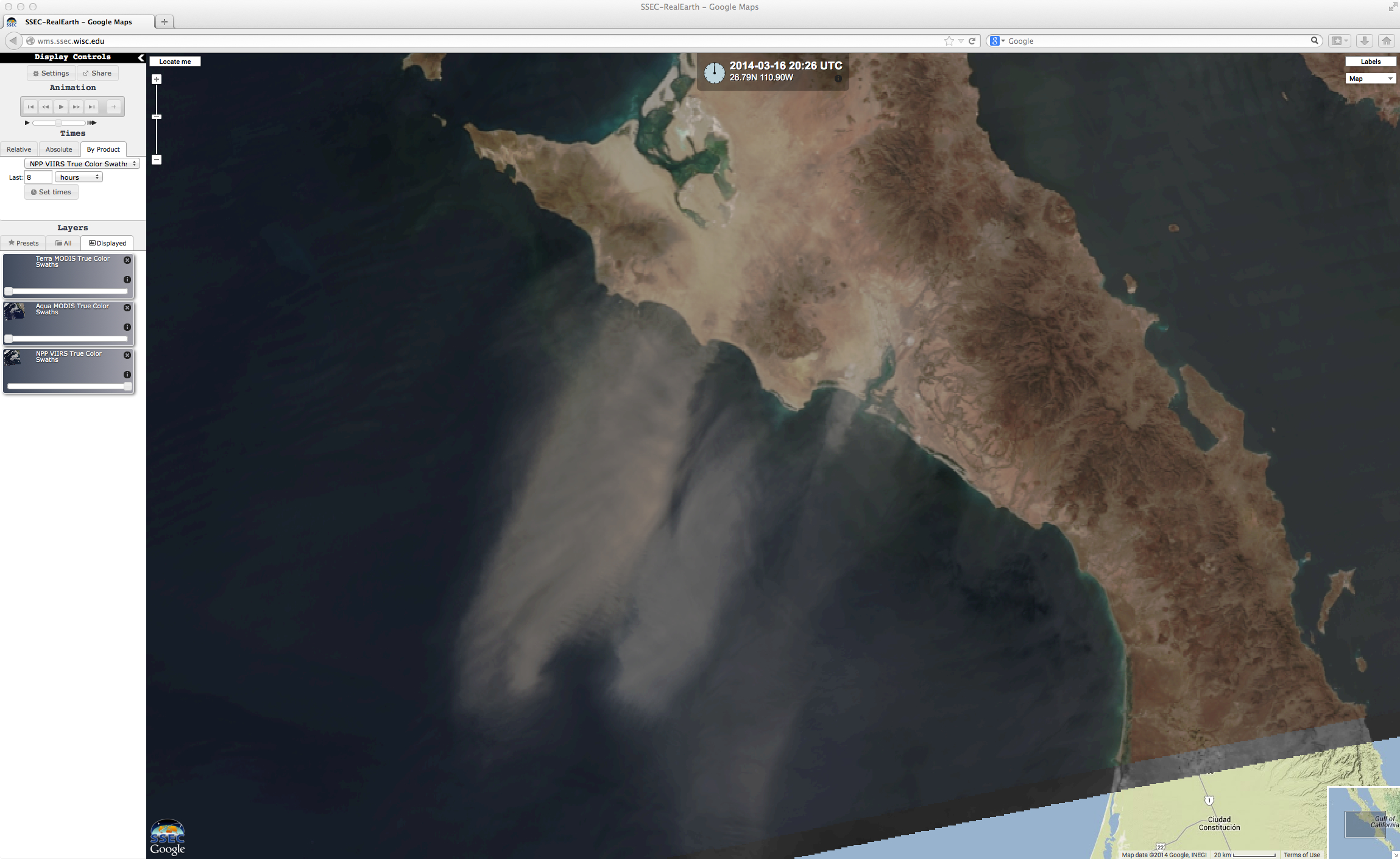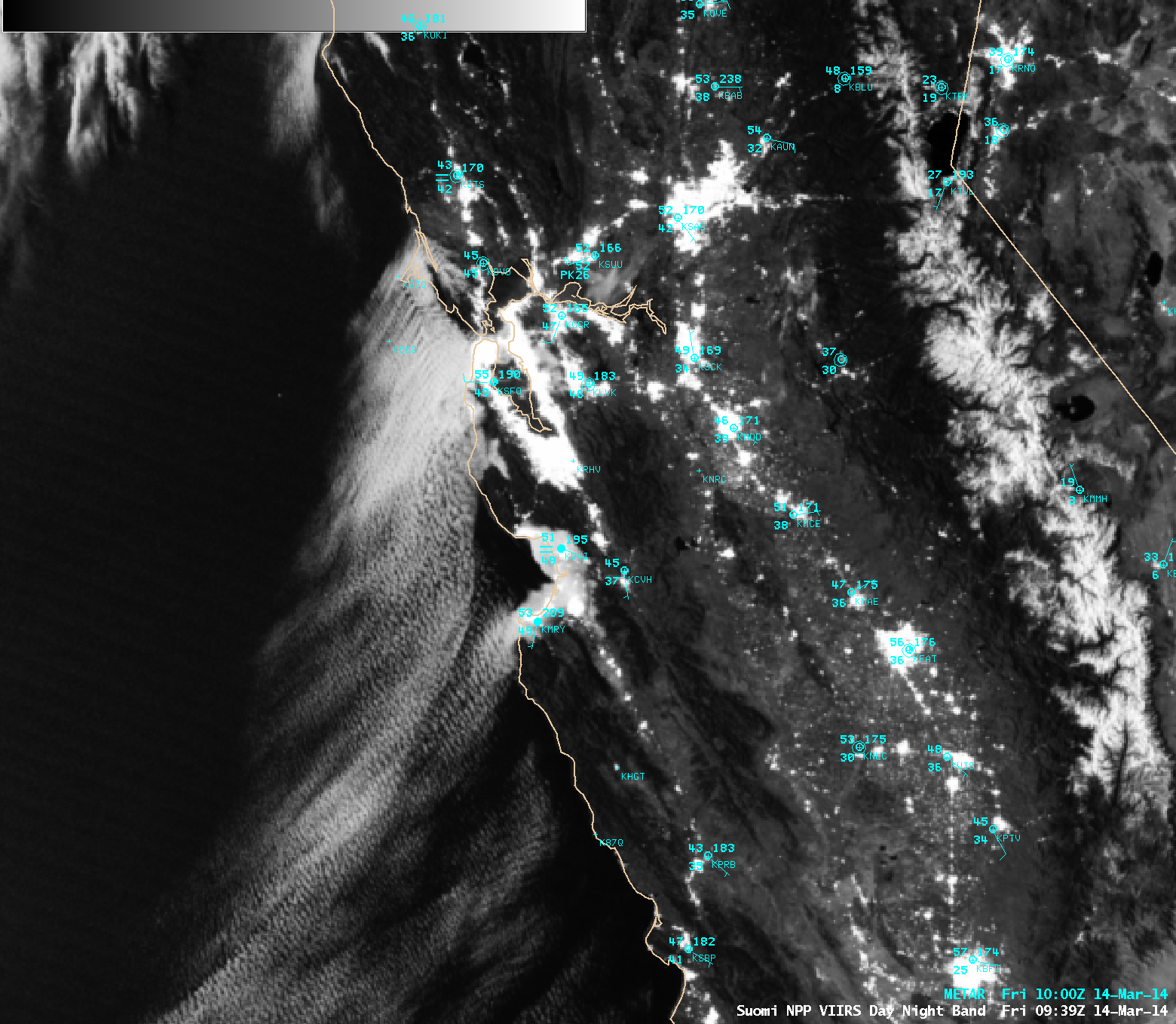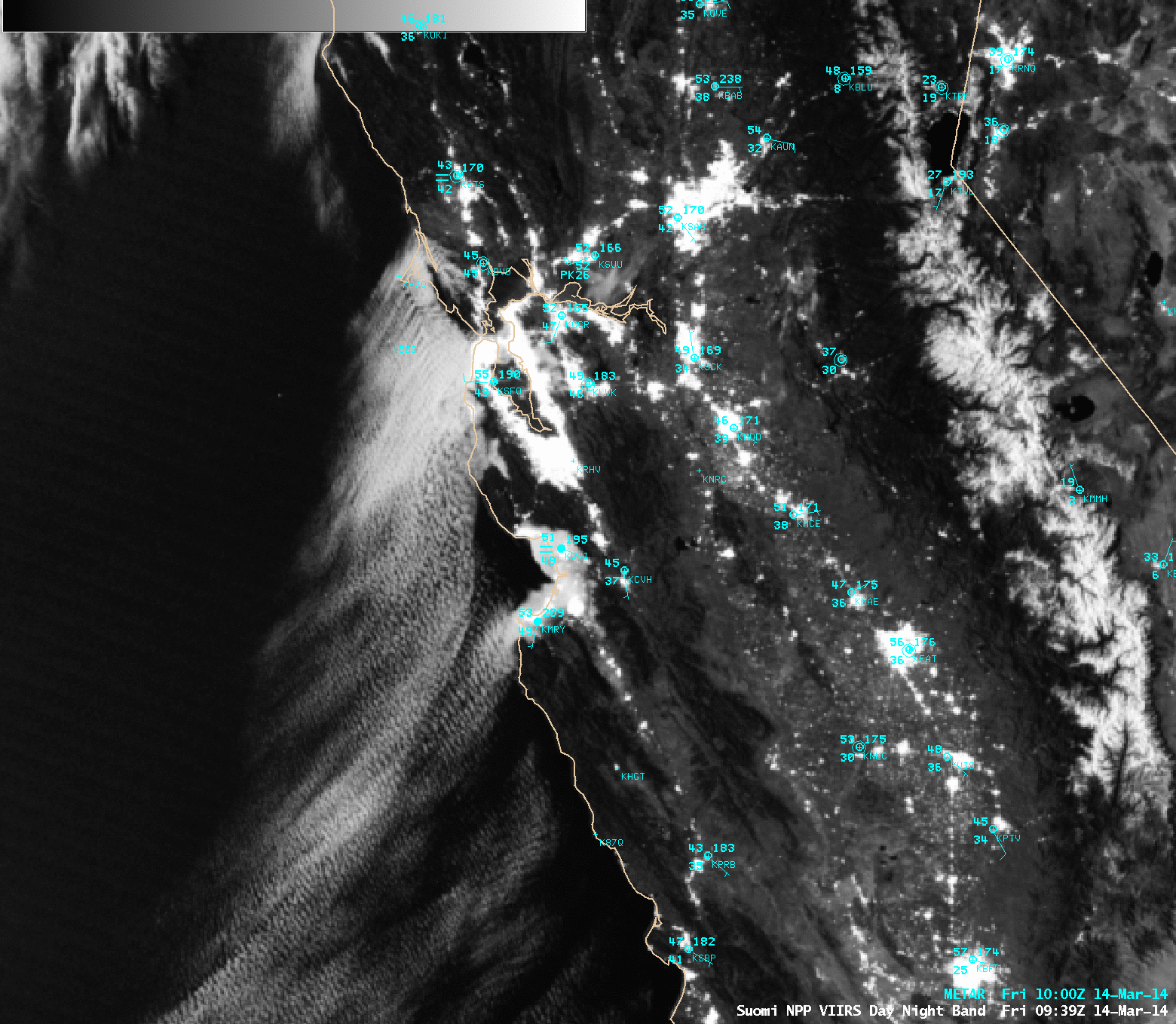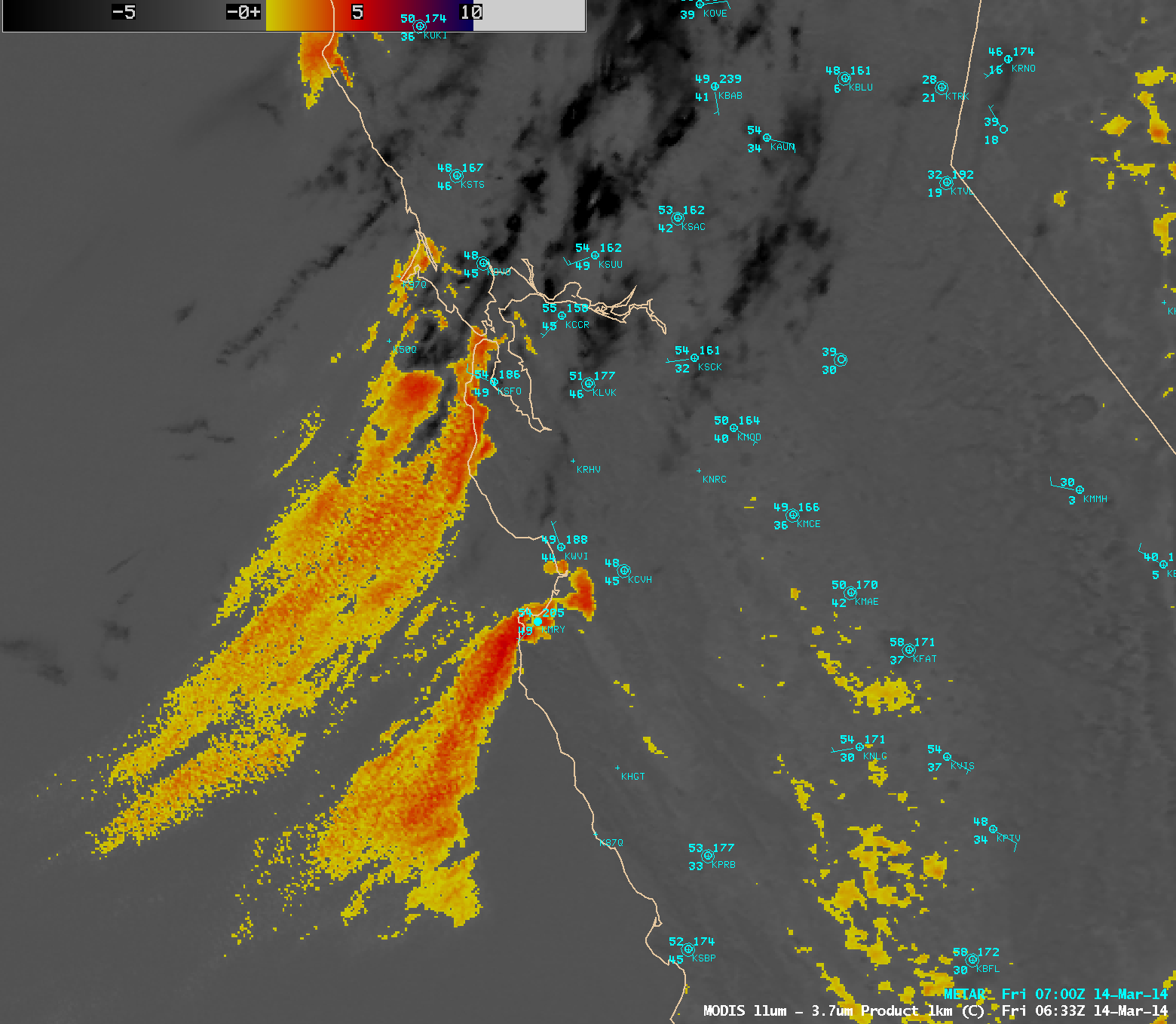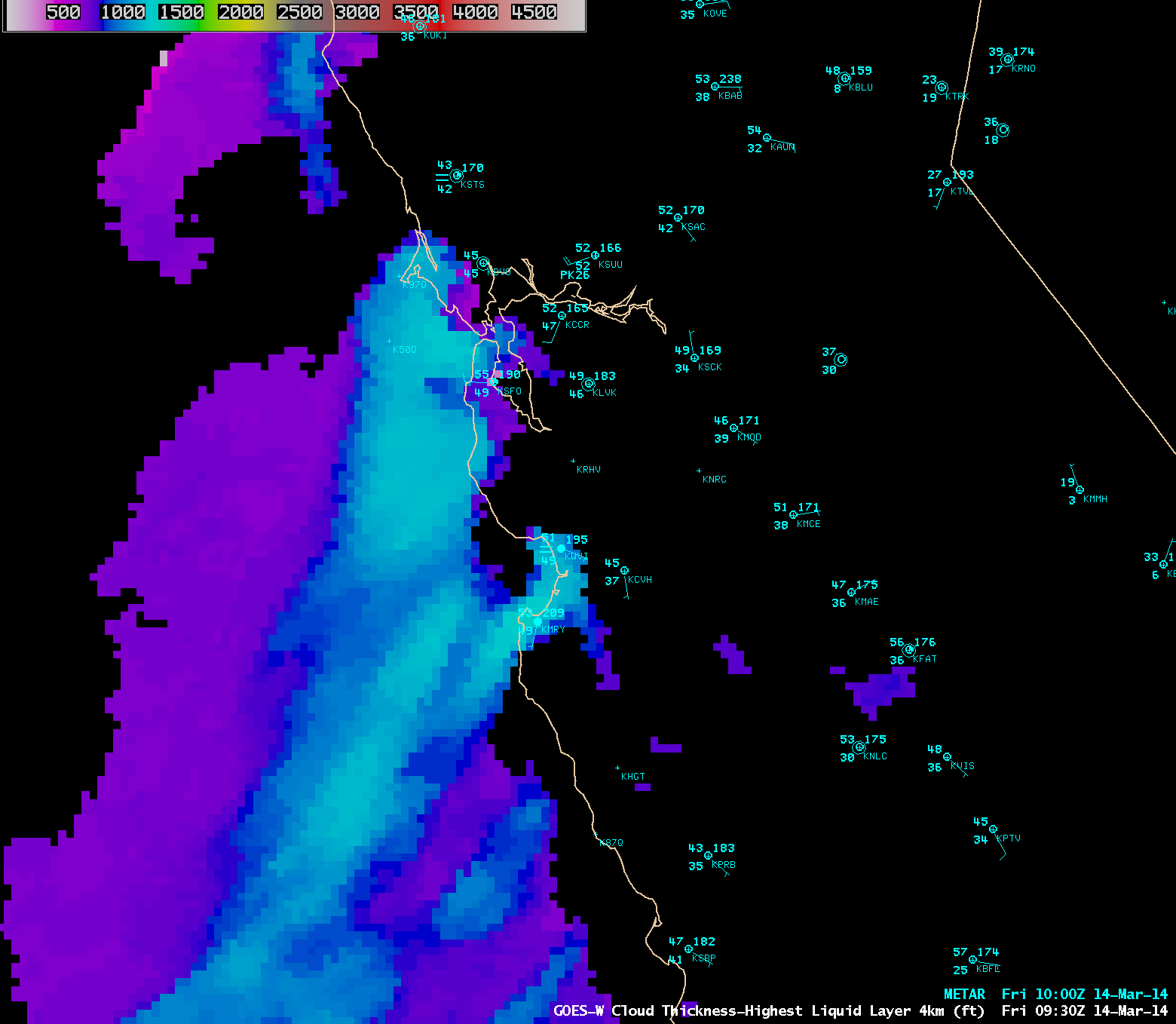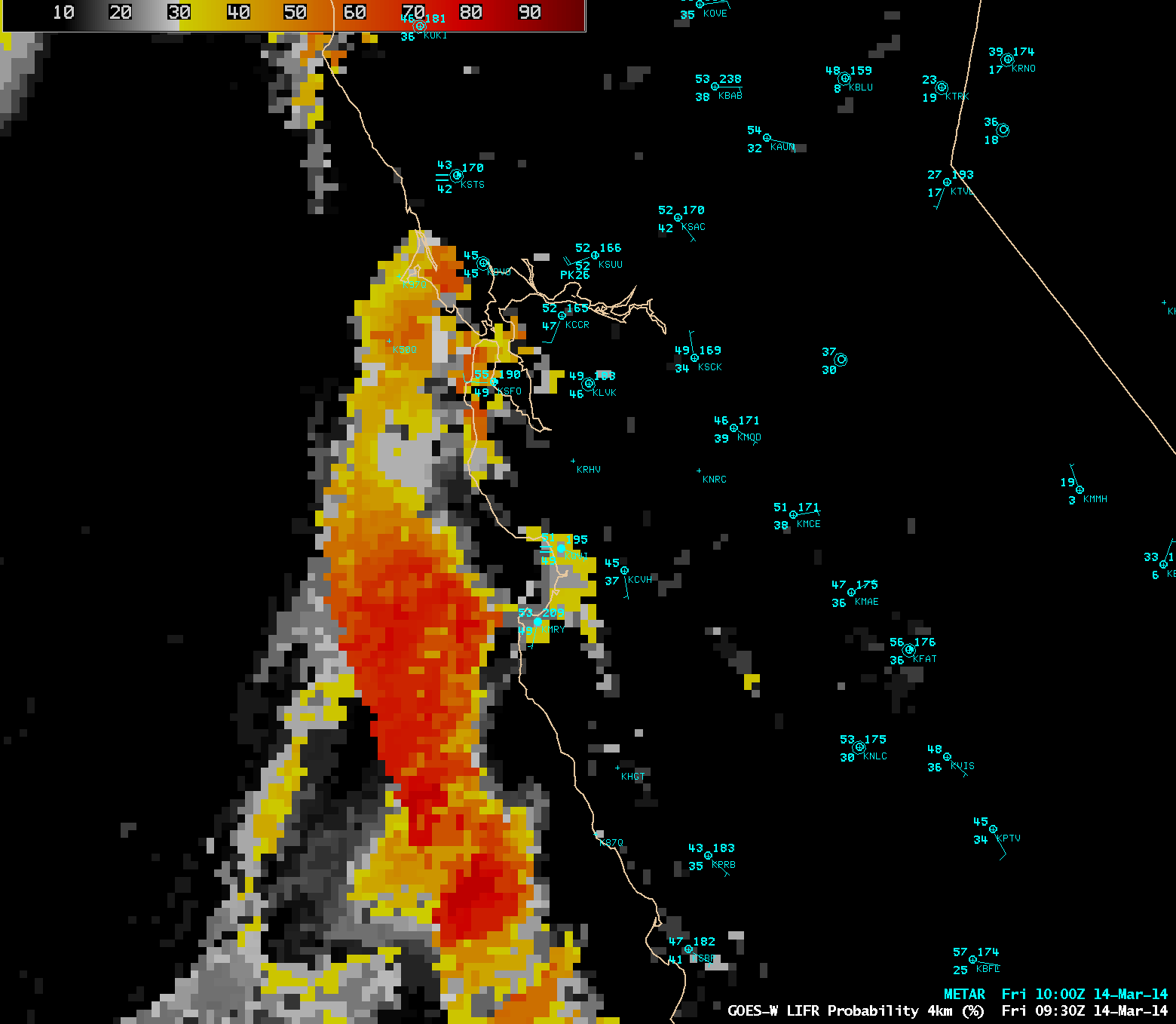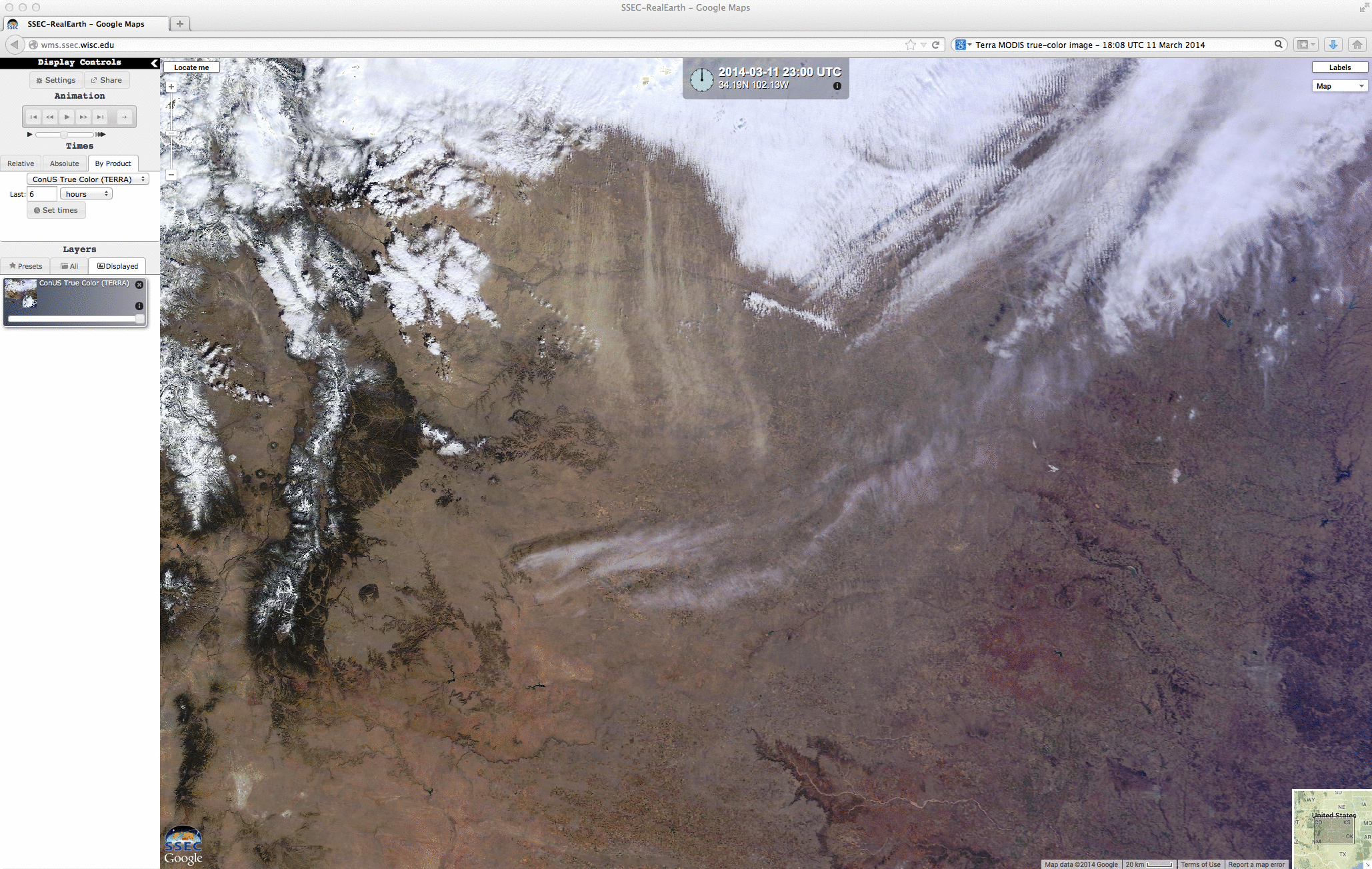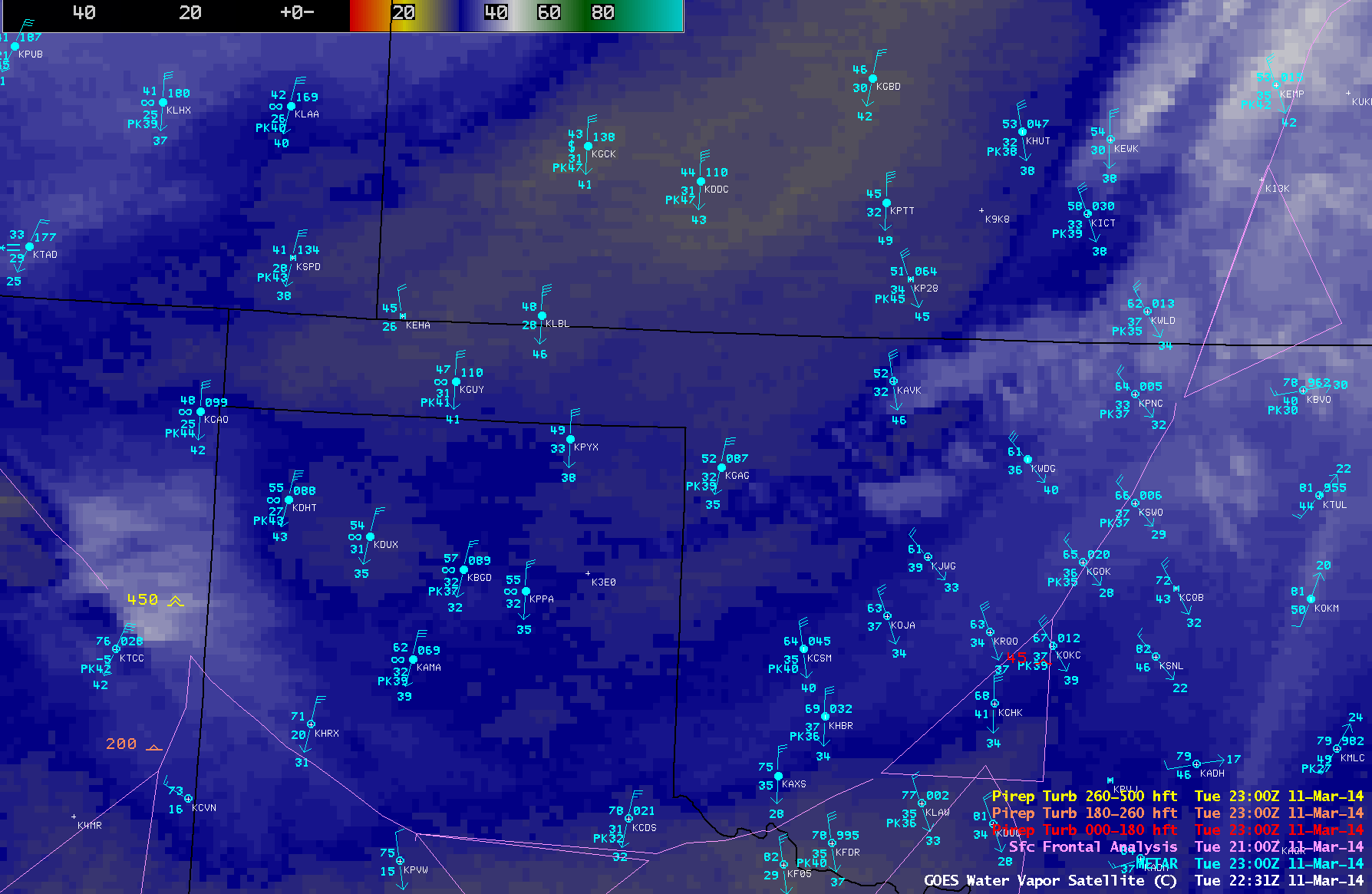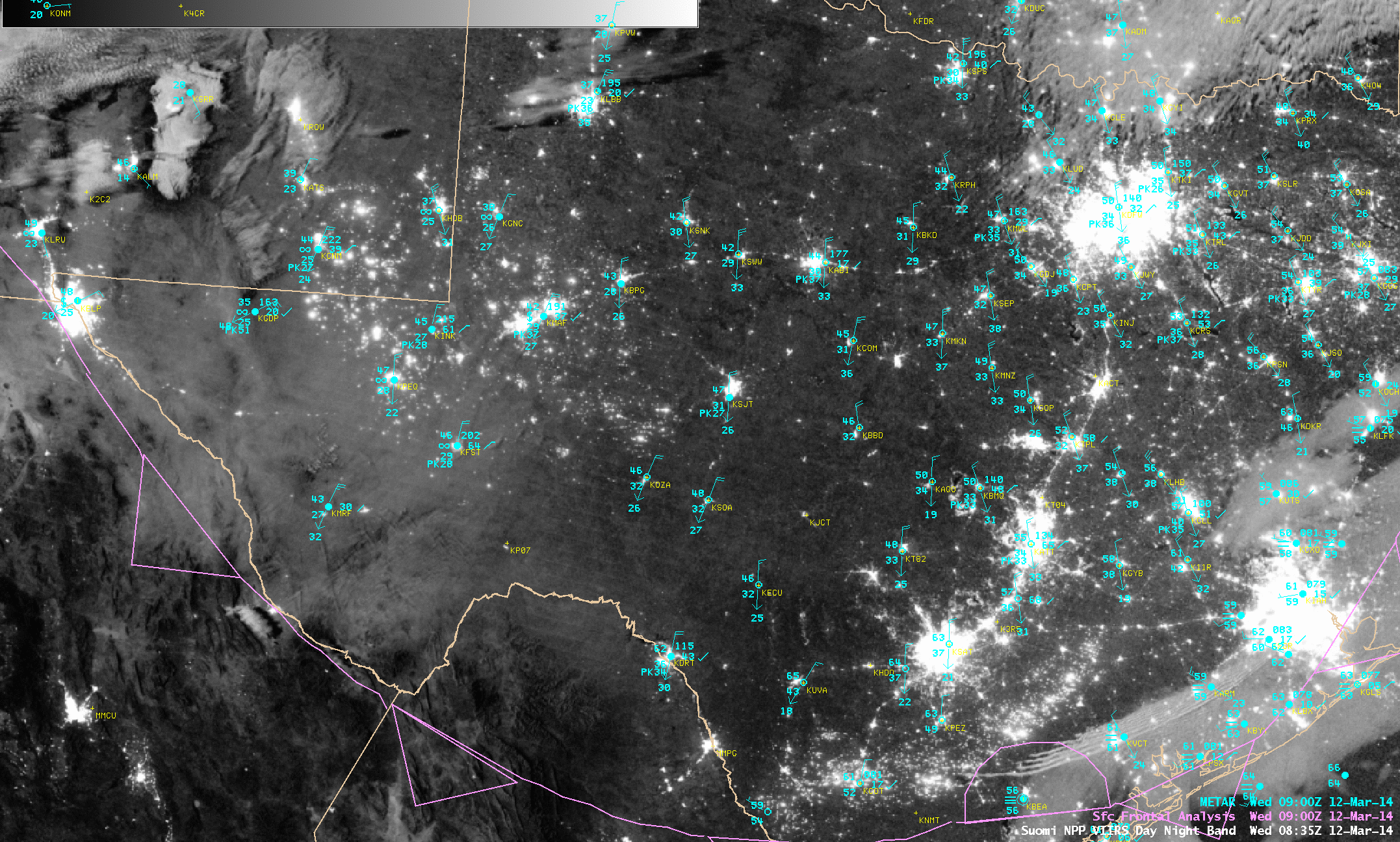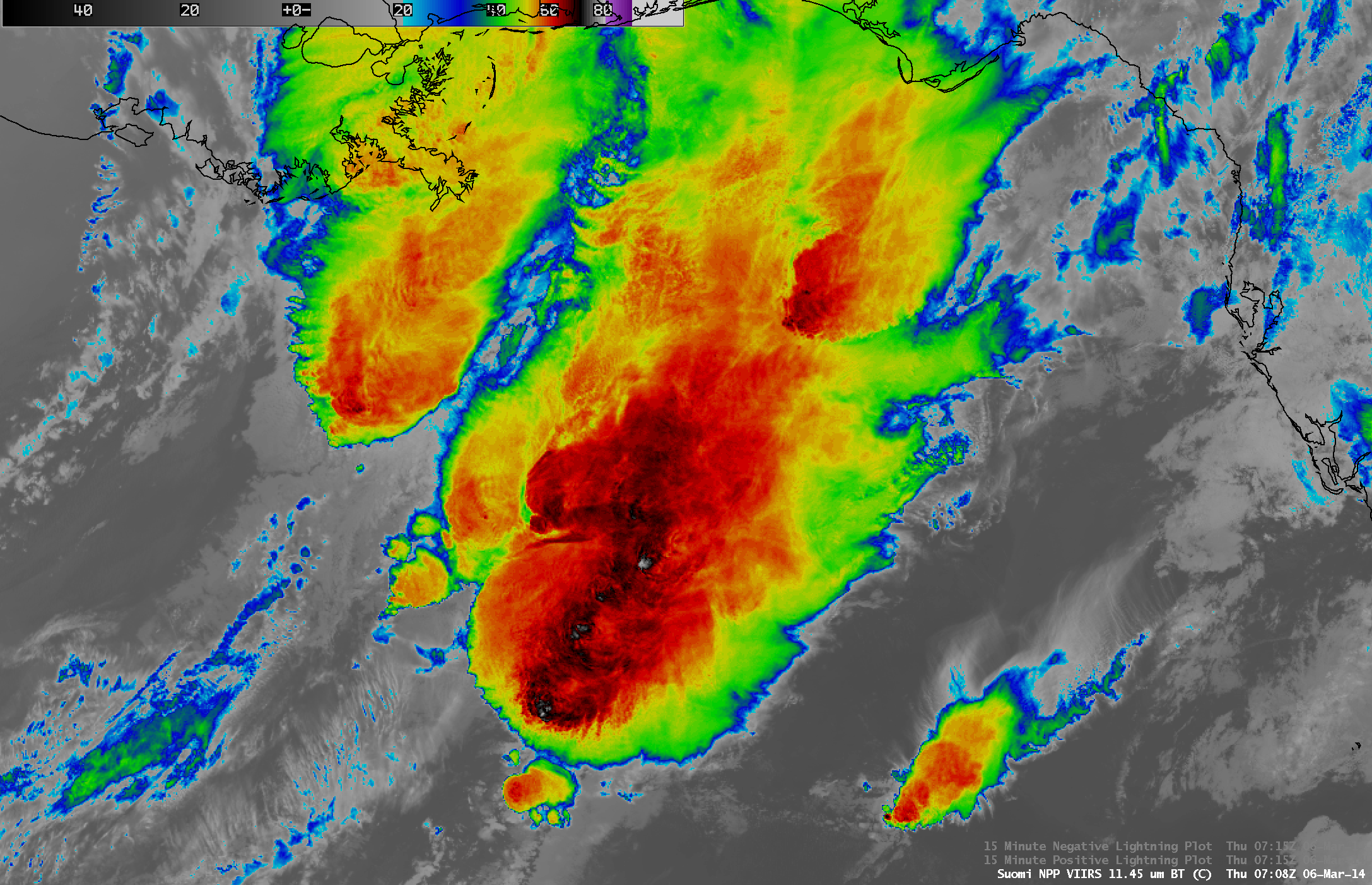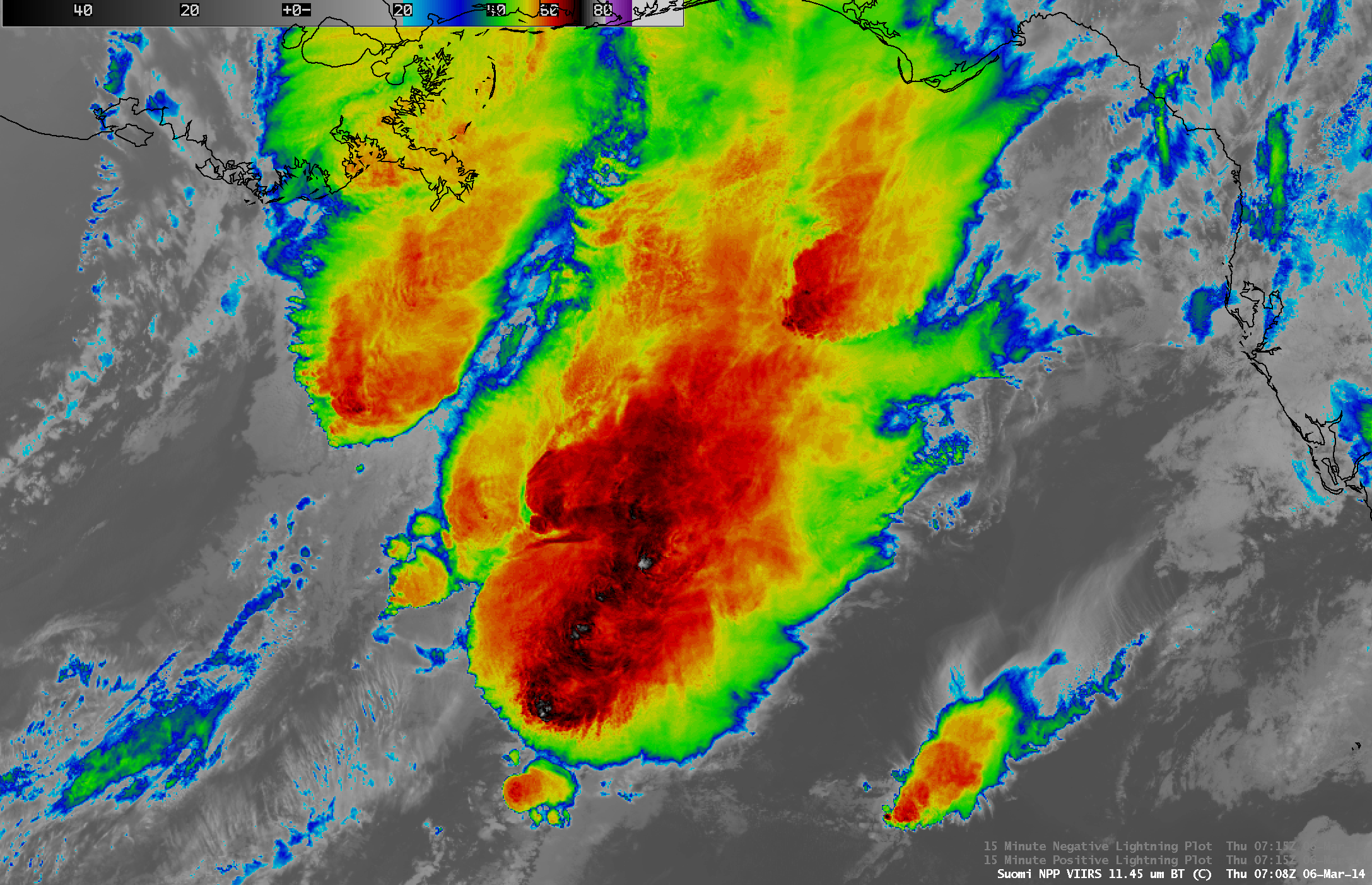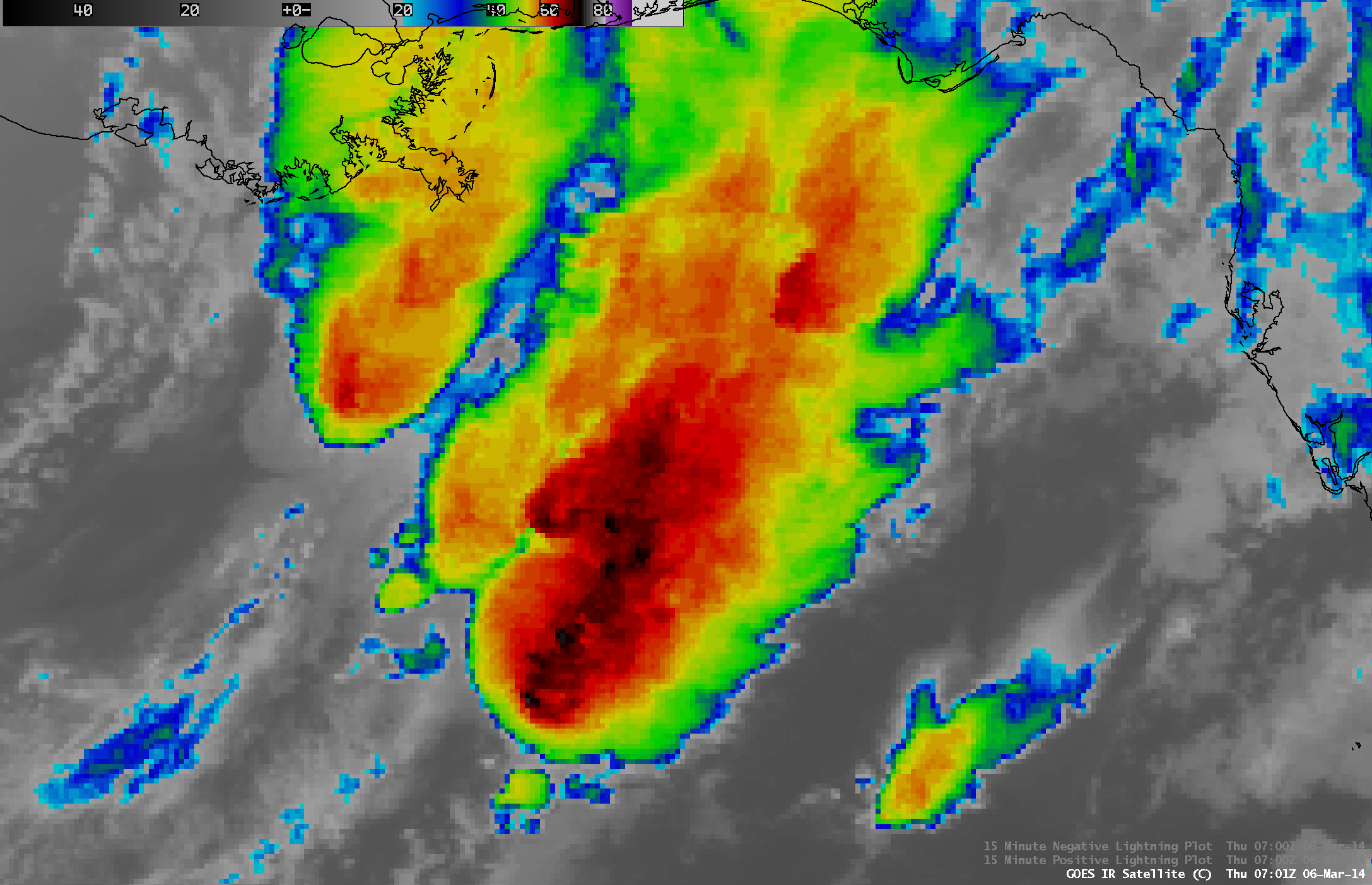McIDAS images of GOES-15 (GOES-West) 0.63 µm visible channel data (above; click image to play animation) revealed large plumes of blowing dust and sand, which were moving south/southwestward from the coast of Baja California and western Mexico on 16 March 2014. There were no surface observations in the immediate vicinity of the Baja California dust plume source regions, but farther to the southeast at Loreta (station identifier MMLT) winds gusted to 37 knots or 43 mph at 19 UTC (12 Noon local time), and surface visibility was reduced to 3 miles. Surface winds were likely channelled by the upstream mountainous terrain to reach higher speeds near the dust plume source regions.
A comparison of AWIPS images of Aqua MODIS 0.65 µm visible, 1.38 µm “cirrus detection”, 3.7 µm shortwave IR, 11.0 µm “IR window”, and 6.7 µm water vapor channel data at 21:40 UTC (below) showed the following: (1) the dust/sand plume could also be seen on the 1.38 µm “cirrus detection channel” image, since this channel can be used to identify any airborne particles that are effective scatterers of light (such as cirrus ice crystals, volcanic ash, haze, or dust/sand); (2) while there was no obvious dust/sand signal on the conventional IR window channel image, the much warmer (darker black) signature on the shortwave IR image was due to reflection of incoming solar radiation off the dust/sand particles; (3) on the water vapor image, an undular bore appeared to be developing near the leading edge of the dust/sand plume. According to 1-hour interval MADIS satellite-derived atmospheric motion vectors (green wind barbs), the plumes were moving toward the southwest at speeds as fast as 25 knots at the time.
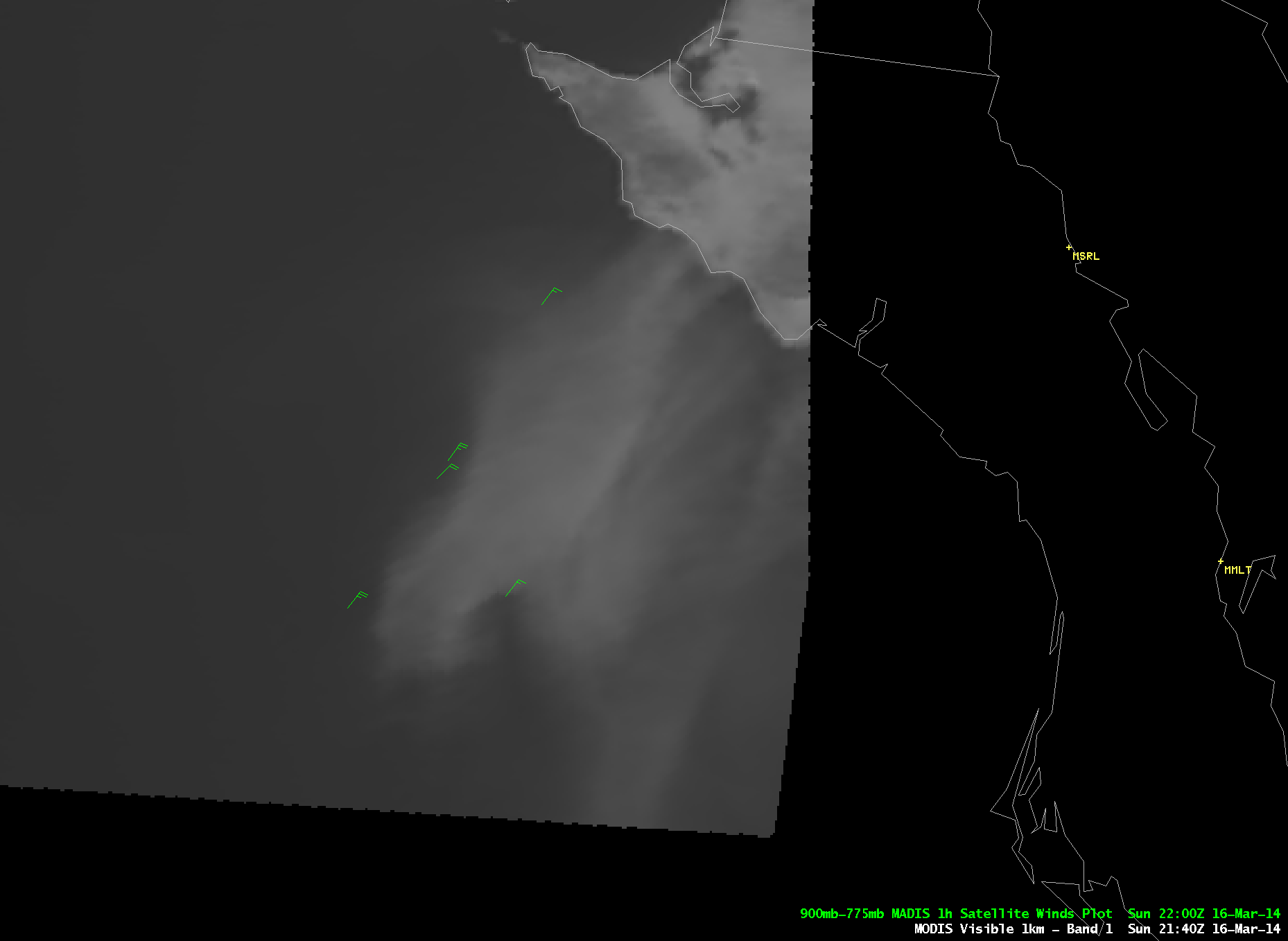
Aqua MODIS 0.65 µm visible, 1.38 µm cirrus channel, 3.7 µm shortwave IR, 11.0 µm IR, and 6.7 µm water vapor channel images
Metop ASCAT surface scatterometer winds (cyan wind barbs) at 17:43 UTC (below) indicated that winds were northeasterly at speeds around 20 knots just off the western coast of Baja California; 18 UTC GOES-15 satellite-derived winds (green wind barbs) tracked the southwestward motion of the dust plumes at speeds of 20-31 knots.

GOES-15 0.63 µm visible image with GOES-15 satellite-derived winds and Metop ASCAT surface scatterometer winds
A sequence of true-color Red/Green/Blue (RGB) images from Terra MODIS, Suomi NPP VIIRS, and Aqua MODIS viewed using the SSEC RealEarth web map server (below) showed the southwestward progression of the tan-colored dense plumes of airborne dust/sand from Baja California. In the initial Terra MODIS image, the source region of many of the plumes appeared to be near the El VizcaÃno Biosphere Reserve.
View only this post Read Less


